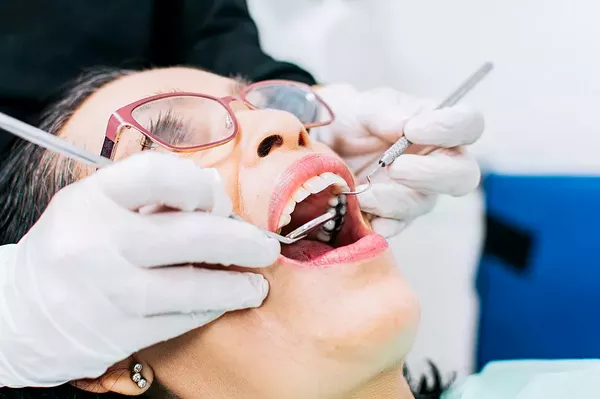Gum disease, also known as periodontal disease, is a prevalent oral health condition that affects millions of people worldwide. It often begins silently, progressing slowly and painlessly in its early stages. Recognizing the first signs of gum disease is crucial because timely intervention can prevent its progression and associated complications. In this comprehensive guide, we will explore the earliest signs of gum disease, risk factors, and the importance of early detection and prevention.
Understanding Gum Disease
Gum disease is an inflammatory condition that primarily affects the gums and the supporting structures of the teeth, including the bone. It is primarily caused by the accumulation of dental plaque, a thin, sticky film of bacteria that forms on teeth. There are two primary stages of gum disease:
Gingivitis: Gingivitis is the earliest stage of gum disease and is characterized by inflammation of the gums. Gingivitis is typically mild and reversible with proper dental care and good oral hygiene practices.
Periodontitis: If gingivitis is left untreated, it can progress to periodontitis, a more severe form of gum disease. Periodontitis involves the destruction of the supporting structures of the teeth, including the bone. Once periodontitis develops, it cannot be fully reversed, but its progression can be slowed or halted with appropriate treatment.
The First Signs of Gum Disease
Recognizing the first signs of gum disease is essential for early intervention and effective treatment. Here are common early warning signs to watch for:
Gum Redness and Swelling: Healthy gums should appear pink and firm. One of the first signs of gum disease is gum inflammation, which can lead to redness and swelling. This early stage is often painless, making it easy to overlook.
Bleeding Gums: Gums that bleed during or after brushing, flossing, or eating are a classic sign of gingivitis, the earliest form of gum disease. It’s essential not to ignore bleeding gums, as they can be a clear indicator of an underlying issue.
Bad Breath (Halitosis): Persistent bad breath can be an early sign of gum disease. Bacteria in the mouth release toxins that can cause an unpleasant odor. Bad breath often accompanies gum inflammation and infection.
Gum Recession: As gum disease progresses, the gums may start to recede or pull away from the teeth. This exposes the tooth roots and can lead to tooth sensitivity. Receding gums can also make teeth appear longer.
Tartar Buildup: Over time, dental plaque can harden into tartar or calculus. Tartar harbors bacteria and is difficult to remove through regular brushing and flossing. The accumulation of tartar can contribute to gum inflammation and disease.
Changes in Tooth Position: As gum disease advances, teeth may shift or become misaligned. This can affect your bite and appearance.
Gum Sensitivity: Some individuals may experience gum sensitivity, particularly when consuming hot or cold foods and beverages. This sensitivity can be an early sign of gum disease.
Risk Factors for Gum Disease
Several factors can increase your risk of developing gum disease:
Poor Oral Hygiene: Inadequate brushing and flossing can lead to plaque buildup and gingivitis.
Tobacco Use: Smoking or chewing tobacco is a significant risk factor for gum disease.
Genetics: Some individuals may be genetically predisposed to gum disease.
Medical Conditions: Certain medical conditions, such as diabetes and immune disorders, can increase susceptibility to gum disease.
Medications: Some medications, particularly those that reduce saliva flow, can contribute to gum disease.
Hormonal Changes: Hormonal fluctuations, such as those during pregnancy, menstruation, and menopause, can make gums more vulnerable to inflammation.
Age: The risk of gum disease increases with age.
Poor Nutrition: An imbalanced diet lacking essential nutrients can weaken the immune system and gum health.
Stress: Chronic stress can affect the body’s ability to fight infections, including gum disease.
Importance of Early Detection and Prevention
Early detection and intervention are critical in managing gum disease. Gingivitis, the earliest stage, is usually reversible with proper dental care. However, if left untreated, it can progress to periodontitis, which requires more extensive treatment and management. Here’s why early detection and prevention are essential:
Prevent Progression: Treating gum disease in its early stages can prevent its progression to more severe forms, reducing the risk of tooth loss and bone damage.
Maintain Oral Health: Early intervention helps maintain your oral health, including the health of your gums and teeth.
Prevent Complications: Untreated gum disease can lead to complications such as tooth loss, abscesses, and systemic health issues.
Cost-Effective: Treating gingivitis is typically less costly and invasive than managing advanced periodontitis.
Preventing Gum Disease
Preventing gum disease is key to maintaining oral health. Here are steps you can take to prevent gum disease:
Practice Excellent Oral Hygiene: Brush your teeth at least twice a day with fluoride toothpaste and a soft-bristle toothbrush. Floss daily to remove plaque and food particles between teeth.
Regular Dental Check-Ups: Schedule regular dental check-ups and professional cleanings. Your dentist can assess the state of your gums and provide guidance on managing gum disease.
Quit Smoking: If you smoke or use tobacco products, quitting can significantly improve your oral health and reduce the risk of gum disease.
Balanced Diet: Consume a balanced diet rich in fruits, vegetables, whole grains, and lean proteins. Limit sugary and starchy foods.
Manage Medical Conditions: If you have underlying medical conditions that increase your risk of gum disease, work with your healthcare provider to manage these conditions effectively.
Conclusion
The first signs of gum disease, such as gum redness, bleeding, bad breath, and gum sensitivity, should not be ignored. Early detection and intervention are crucial for preventing the progression of gum disease and its associated complications. By practicing excellent oral hygiene, seeking regular dental care, and addressing risk factors, individuals can reduce their risk of gum disease and maintain healthy gums and teeth throughout their lives. Remember that the first step in managing gum disease is recognizing the early warning signs and seeking professional dental care promptly.
Related Topics:































